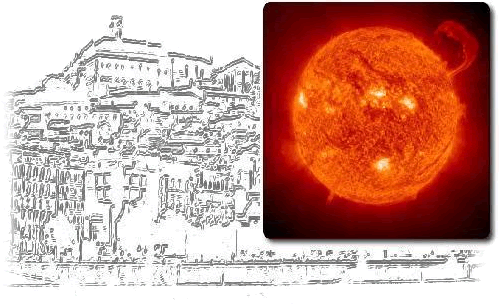|
|
|
|
|
|
|
|
|
|
|
|
|
Ivan Dorotovič, Mr. - PhD |
|
Slovak Central Observatory, Hurbanovo, Slovak Republic |
|
|
|
|
|
|
|
Session 1 - Poster |
|
Evolution of photospheric pores in the magnetic field |
|
I. Dorotovič (1,3), M. Rybanský (1), M. Sobotka (2), M. Lorenc (1), M. Barandas (3), J.M. Fonseca (3) ; 1 - Slovak Central Observatory,
Hurbanovo, Slovak Republic, 2 – Astronomical Institute of the Academy of Sciences of Czech Republic, Ondøejov, Czech Republic, 3 - CTS-UNINOVA, FCT/UNL, Caparica, Portugal |
|
|
|
We describe conditions of pore formation in relation to the configuration and intensity
of magnetic field. We use observations of the SDO/HMI instrument, which observes the photosphere
in continuum and simultaneously the magnetic field with a spatial resolution of better than 1"
and a temporal resolution of 45 s. We analyze a time-sequence of evolution of area and brightness
of pores, their statistics, and in parallel a time-sequence of the line-of-sight magnetic field
intensity and its correlation with the area and brightness. Sunspot observations from the Hurbanovo
Observatory are used for the selection of a suitable area on the solar disc. A pore (small sunspot)
observed near the central meridian at the Hurbanovo Observatory on October 11, 2013 was selected for
analysis. We chose from each SDO image only area with a diameter of 1.05° (35" as seen from the Earth). Points of the area were transformed into rectangular
coordinates (Δl, b) and for the alignment of individual images we found from the movement of a pore
the synodical rotational speed: ω = 14.35°/24 hours, which is by 1°/24 higher than the tabular value.
We traced the selected area from 22:01:30 h UT (October 10, 2013) to 20:01:30 h UT (October 11, 2013) in 83 images with a temporal resolution of 15 minutes.
Evolution of the area was analyzed using an animation and quantitative results are derived from data
files. At least 6 pores appeared in the area during the reported period. Pores are visible if a ratio
p (p = intensity in the pore/background intensity) decreases below 0.85. The background noise is at
a level of 5% (granulation). The magnetic induction is at the same time approximately 600 Gauss.
The maximum diameter of the pores is of about 5" (10 pixels), the minimum value of p is 0.49 when
B = 1200 Gauss. The course of evolution is presented in a tabular form. Aim of the analysis is demonstrated also using selected images from SDO in cooperation with CTS-UNINOVA/CA3 (Caparica, Portugal). |
|
|
|
|
|
|
|




 







 |



